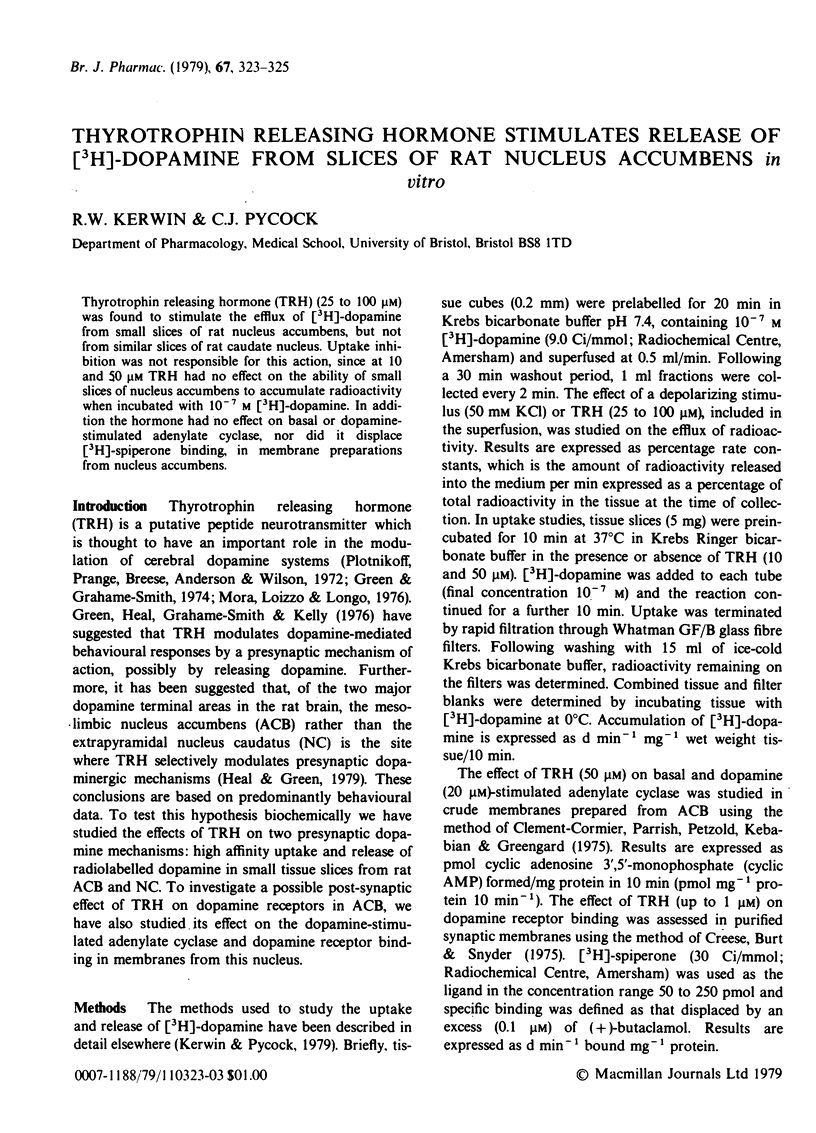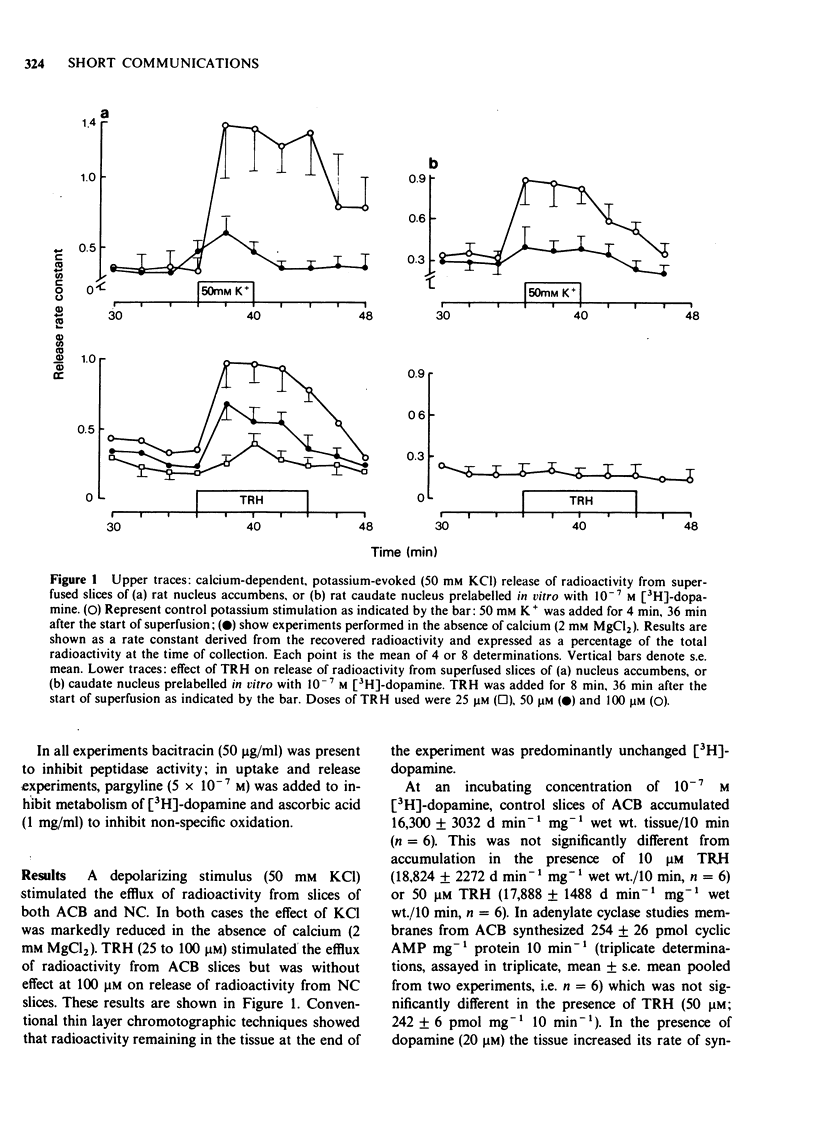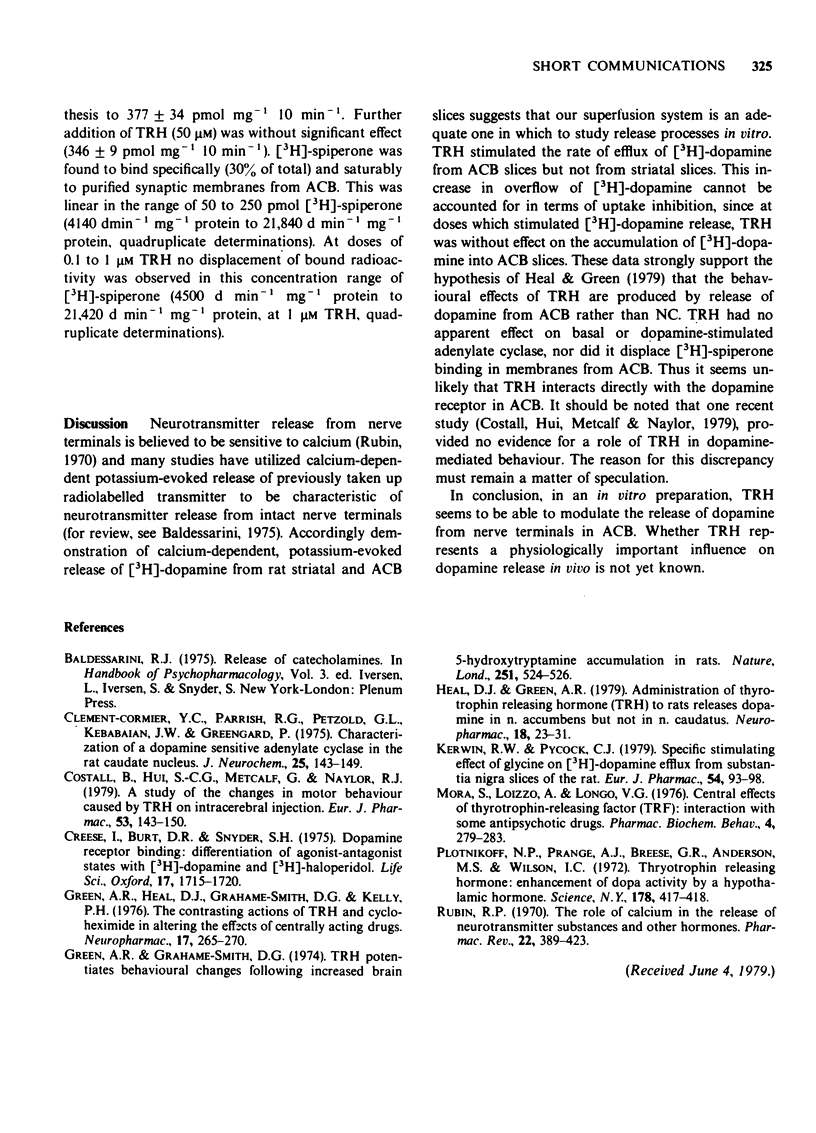Abstract
Thyrotrophin releasing hormone (TRH) (25 to 100 microM) was found to stimulate the efflux of [3Hu-dopamine from small slices of rat nucleus accumbens, but not from similar slices of rat caudate nucleus. Uptake inhibition was not responsible for this action, since at 10 and 50 microM TRH had no effect on the ability of small slices of nucleus accumbens to accumulate radioactivity when incubated with 10(-7) M [3H]-dopamine. In addition the hormone had no effect on basal or dopamine-stimulated adenylate cyclase, nor did it displace [3H]-spiperone binding, in membrane preparations from nucleus accumbens.
Full text
PDF


Selected References
These references are in PubMed. This may not be the complete list of references from this article.
- Clement-Cormier Y. C., Parrish R. G., Petzold G. L., Kerabian J. W., Greengard P. Characterization of a dopamine-sensitive adenylate cyclase in the rat caudate nucleus. J Neurochem. 1975 Aug;25(2):143–149. doi: 10.1111/j.1471-4159.1975.tb12241.x. [DOI] [PubMed] [Google Scholar]
- Costall B., Hui S. C., Metcalf G., Naylor R. J. A study of the changes in motor behaviour caused by TRH on intracerebral injection. Eur J Pharmacol. 1979 Jan 1;53(2):143–150. doi: 10.1016/0014-2999(79)90159-6. [DOI] [PubMed] [Google Scholar]
- Creese I., Burt D. R., Synder S. H. The dopamine receptor: differential binding of d-LSD and related agents to agonist and antagonist states. Life Sci. 1975 Dec 1;17(11):1715–1719. doi: 10.1016/0024-3205(75)90118-6. [DOI] [PubMed] [Google Scholar]
- Green A. R., Grahame-Smith D. G. TRH potentiates behavioural changes following increased brain 5-hydroxytryptamine accumulation in rats. Nature. 1974 Oct 11;251(5475):524–526. doi: 10.1038/251524a0. [DOI] [PubMed] [Google Scholar]
- Heal D. J., Green A. R. Administration of thyrotropin releasing hormone (TRH) to rats releases dopamine in n. accumbens but not n. caudatus. Neuropharmacology. 1979 Jan;18(1):23–31. doi: 10.1016/0028-3908(79)90005-4. [DOI] [PubMed] [Google Scholar]
- Kerwin R. W., Pycock C. J. Specific stimulating effect of glycine on 3H-dopamine efflux from substantia nigra slices of the rat. Eur J Pharmacol. 1979 Feb 15;54(1-2):93–98. doi: 10.1016/0014-2999(79)90411-4. [DOI] [PubMed] [Google Scholar]
- Mora S., Loizzo A., Longo V. G. Central effects of thyrotropin-releasing factor (TRF); interaction with some antipsychotic drugs. Pharmacol Biochem Behav. 1976 Mar;4(3):279–282. doi: 10.1016/0091-3057(76)90242-2. [DOI] [PubMed] [Google Scholar]
- Plotnikoff N. P., Prange A. J., Jr, Breese G. R., Anderson M. S., Wilson I. C. Thyrotropin releasing hormone: enhancement of dopa activity by a hypothalamic hormone. Science. 1972 Oct 27;178(4059):417–418. doi: 10.1126/science.178.4059.417. [DOI] [PubMed] [Google Scholar]
- Rubin R. P. The role of calcium in the release of neurotransmitter substances and hormones. Pharmacol Rev. 1970 Sep;22(3):389–428. [PubMed] [Google Scholar]


